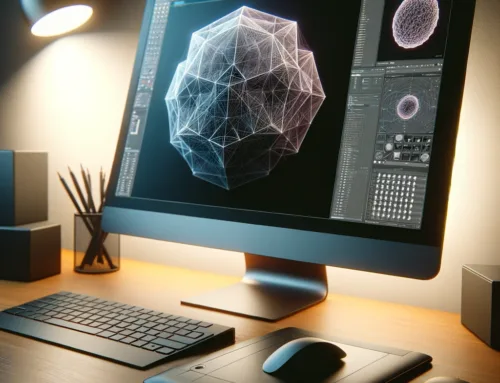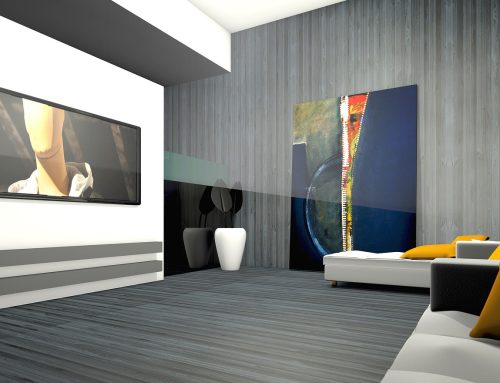Warum Autodesk Meshmixer noch immer gefragt ist.
In dem folgenden Beitrag möchten wir die Gründe eruieren, weshalb Autodesk kostenloses Meshmixer-Tool immer noch unterstützt wird.
Warum ist eine derartige Frage zum aktuellen Zeitpunkt relevant? Ganz einfach, weil Autodesk in letzter Zeit seine kostenlosen Tools „bereinigt“ und große Änderungen an ihrer 123D-Suite und den Netfabb-Tools vorgenommen hat.
Diese Tools wurden hauptsächlich von Autodesk in den letzten Jahren erworben und es herrscht die verbreitete Meinung, nur deshalb, um ihre Benutzerbasis für die zukünftige Migration zu bezahlten Tools zu erhalten.
Eines der Tools ist Meshmixer.
Meshmixer ist zweifellos das unverzichtbare „schweizer Taschenmesser“ für alle, die mit 3D-Drucktechnologie arbeiten. Es erstellt keine 3D-Modelle, aber es erlaubt ihnen, eine Reihe von kritischen Operationen an 3D-Modellen durchzuführen, einschließlich der Größenbestimmung, Orientierung, Cutting, Cleaning, Reparatur und des Mischens von 3D-Modellen. Sie können nur mit den Werkzeugen ihres 3D-Druckherstellers auskommen, aber Meshmixer macht noch so viel mehr, was in Herstellerwerkzeugen nicht oft vorhanden ist.
Es war ein eigenständig erstelltes 3D-Modellmanipulationsprogramm, das 2009 von Ryan Schmidt aus Toronto ins Leben gerufen wurde. Im Jahr 2011 wurde es an Autodesk verkauft, wo es sich mehr oder weniger getrennt von anderen Autodesk-Produkten entwickelt hat.
Während dieser Zeit brachte Autodesk diese neuen Tools nach und nach in die 123D Suite ein, die sie anschließend heruntergefahren oder anderen Projekten zugeteilt haben. Aus irgendeinen Grund war Meshmixer jedoch nie in diese Unternehmensmanöver verwickelt.
Heute wird Meshmixer weiterhin von Autodesk unterstützt und erhält immer wieder neue Versionen, darunter eine vom letzten Monat.
Warum sollte Autodesk dieses Tool in Ruhe lassen, während die meisten anderen verbannt wurden? Es existiert immer noch im Rahmen ihres „Research“-Programms. Wir glauben die Ursache dafür gefunden zu haben.
Wenn Sie sich im Meshmixer befinden, sehen Sie eine visuelle Darstellung des 3D-Build-Volumens, in dem Sie das 3D-Modell bearbeiten können. Aber welches Volumen des 3D-Druckers wird verwendet?
Dies ist mit einem harmlosen Popup-Menü in der oberen rechten Ecke eingestellt. Wenn Sie es auswählen, erhalten Sie eine sehr lange Liste von 3D-Druckern, 95 in der aktuellen Version. Die Liste ist sehr interessant.
Die Liste der Drucker enthält eine Reihe von beliebten 3D-Druckern, die typischerweise von Hobby-Künstlern und Profis gleichermaßen verwendet werden, wie z.B. Dremel, Flashforge, Formlabs, Lulzbot, MakerGear, Printrbot, SeeMeCNC, Tinkerine, Ultimaker, Up und Zortrax.
Aber auch industrielle 3D-Drucker wie die von Arcam, Concept Laser, EOS, ExOne, MarkForged, MCOR, Renishaw und Stratasys gehören dazu.
Ja, Sie werden sehr teure Maschinen auf dieser Liste finden, wie die High-End-Polymerdrucker EOS Formigam Fortus 900mc oder Objet500 Connex3 sowie die noch teureren 3D-Metalldrucker Arcam Q20, Concept Laser M2 und EOS M290.
Warum sollte Autodesk Optionen für Industrieanlagen in dieses „Hobby“-Tool aufnehmen? Ausrüstung, die in einigen Fällen Millionen von Dollar kostet.
Weil es das nicht ist.
Autodesk positioniert das frühere „Hobby“-Tool als ein geeignetes Werkzeug, das von jedermann im 3D-Druckbereich verwendet werden sollte, vom Anfänger bis zum Profi mit teuren Geräten.
Und deshalb ist Meshmixer immer noch so gefragt.
Eine Änderung, die wir in der Zukunft sehen werden, ist eine kostenpflichtige Version von Meshmixer oder eine Integration der lang verfeinerten Funktionen direkt in einige ihrer kostenpflichtigen Produkte, aber bisher ist das noch nicht geschehen.
One Comment
Comments are closed.



Servus, offenbar wurde Meshmixer still und heimlich vom Netz genommen. Seit Tagen ist die Seite von Meshmixer nicht mehr erreichbar. Zum Glück habe ich die letzte aktuelle Version heruntergeladen. Ist also wie bei Toxik und Matchmover klammheimlich geschehen – ganz ohne vorherige Ankündigung…